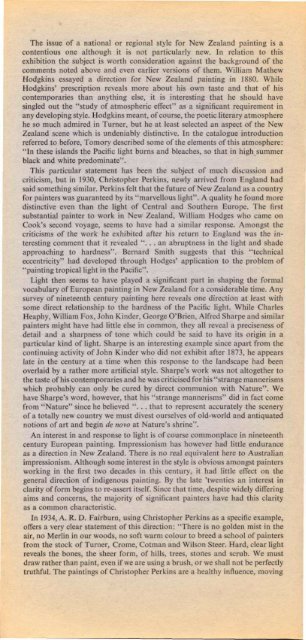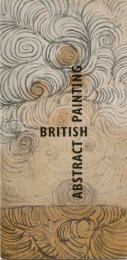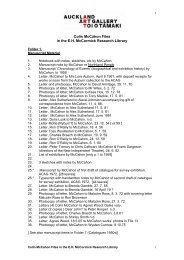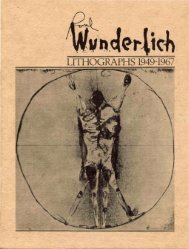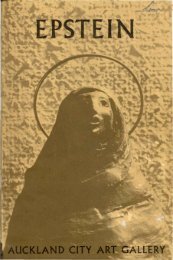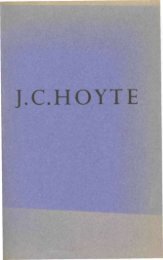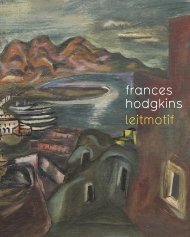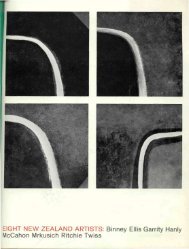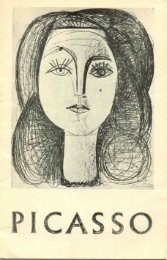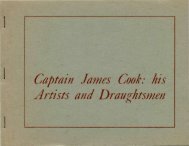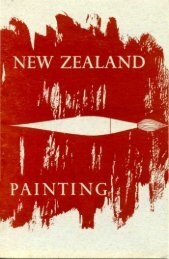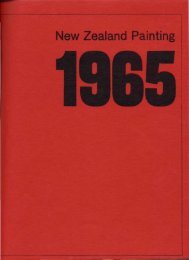Untitled - Auckland Art Gallery
Untitled - Auckland Art Gallery
Untitled - Auckland Art Gallery
You also want an ePaper? Increase the reach of your titles
YUMPU automatically turns print PDFs into web optimized ePapers that Google loves.
The issue of a national or regional style for New Zealand painting is acontentious one although it is not particularly new. In relation to thisexhibition the subject is worth consideration against the background of thecomments noted above and even earlier versions of them. William MathewHodgkins essayed a direction for New Zealand painting in 1880. WhileHodgkins' prescription reveals more about his own taste and that of hiscontemporaries than anything else, it is interesting that he should havesingled out the "study of atmospheric effect" as a significant requirement inany developing style. Hodgkins meant, of course, the poetic literary atmospherehe so much admired in Turner, but he at least selected an aspect of the NewZealand scene which is undeniably distinctive. In the catalogue introductionreferred to before, Tomory described some of the elements of this atmosphere:"In these islands the Pacific light burns and bleaches, so that in high summerblack and white predominate".This particular statement has been the subject of much discussion andcriticism, but in 1930, Christopher Perkins, newly arrived from England hadsaid something similar. Perkins felt that the future of New Zealand as a countryfor painters was guaranteed by its "marvellous light". A quality he found moredistinctive even than the light of Central and Southern Europe. The firstsubstantial painter to work in New Zealand, William Hodges who came onCook's second voyage, seems to have had a similar response. Amongst thecriticisms of the work he exhibited after his return to England was the interestingcomment that it revealed ". . . an abruptness in the light and shadeapproaching to hardness". Bernard Smith suggests that this "technicaleccentricity" had developed through Hodges' application to the problem of"painting tropical light in the Pacific".Light then seems to have played a significant part in shaping the formalvocabulary of European painting in New Zealand for a considerable time. Anysurvey of nineteenth century painting here reveals one direction at least withsome direct relationship to the hardness of the Pacific light. While CharlesHeaphy. William Fox, John Kinder, George O'Brien. Alfred Sharpe and similarpainters might have had little else in common, they all reveal a preciseness ofdetail and a sharpness of tone which could be said to have its origin in aparticular kind of light. Sharpe is an interesting example since apart from thecontinuing activity of John Kinder who did not exhibit after 1873, he appearslate in the century at a time when this response to the landscape had beenoverlaid by a rather more artificial style. Sharpe's work was not altogether tothe taste of his contemporaries and he was criticised for his "strange mannerismswhich probably can only be cured by direct communion with Nature". Wehave Sharpe's word, however, that his "strange mannerisms" did in fact comefrom "Nature" since he believed ". . . that to represent accurately the sceneryof a totally new country we must divest ourselves of old-world and antiquatednotions of art and begin de novo at Nature's shrine".An interest in and response to light is of course commonplace in nineteenthcentury European painting. Impressionism has however had little enduranceas a direction in New Zealand. There is no real equivalent here to Australianimpressionism. Although some interest in the style is obvious amongst paintersworking in the first two decades in this century, it had little effect on thegeneral direction of indigenous painting. By the late 'twenties an interest inclarity of form begins to re-assert itself. Since that time, despite widely differingaims and concerns, the majority of significant painters have had this clarityas a common characteristic.In 1934, A. R. D. Fairburn, using Christopher Perkins as a specific example,offers a very clear statement of this direction: "There is no golden mist in theair, no Merlin in our woods, no soft warm colour to breed a school of paintersfrom the stock of Turner, Crome, Cotman and Wilson Steer. Hard, clear lightreveals the bones, the sheer form, of hills, trees, stones and scrub. We mustdraw rather than paint, even if we are using a brush, or we shall not be perfectlytruthful. The paintings of Christopher Perkins are a healthy influence, moving


